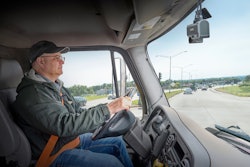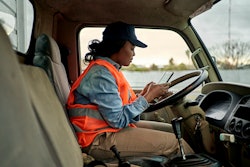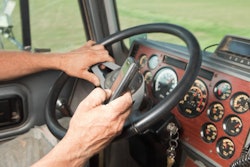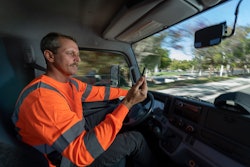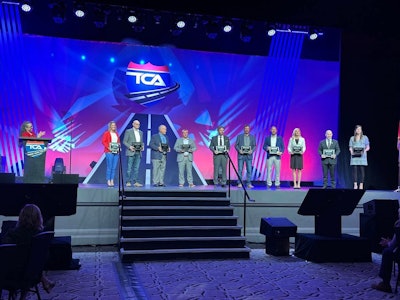
Inward- and outward-facing dash cameras have become pretty standard across fleets, and it’s changing the way training is managed. Fleets are now sifting through footage to work through performance issues captured on camera to be more proactive in training rather than reactive once a negative event has occurred.
But some fleets, like Leonard’s Express (CCJ Top 250, No. 110), are ahead of the pack. Realizing the need to manage that new layer, the Farmington, New York-based, family-owned carrier has developed a formalized education program for everyone who works with the company’s 720 drivers, and it has helped reduce terminations, with turnover around the 50% mark, said Shannon Struzik, vice president of people and development. That is a result of a culture shift – one of the biggest impacts that has come with implementing cameras, she said.
“I see the entire culture of the organization shifting from one of disciplinary … to one of advancement, learning and development and motivation,” she said.
Leonard’s has gone beyond training the driver to training the trainer.
The company hired an executive coach, who worked with the risk control managers, the head of the department and the vice president overseeing risk control to teach each of them how to coach instead of discipline. Struzik said before, drivers held fear of the department because it was the place you had to go if you were in trouble. Now, there has been a shift in that mindset from “principals to the guidance counselor.”
“Coaching is something that comes naturally to some but has to be a learned behavior by others,” she said. “So we devoted and made the investment to teach our risk control managers how to coach, how to have those constructive discussions with our drivers, what to look for when the conversation goes awry and how to bring it back, how to create the dialogue where the driver is looking for guidance.”
Adding cameras to the cab made that shift possible, Struzik said.
Before adding cameras, she said the company was training every driver the same way; with any issue the driver had, they would watch a video, and either they got better, or they parted ways, she said.
“Not everybody learns that way, and I think that it took our industry a bit longer to catch up that there are different ways people learn,” she said. “And because our risk managers are trained on that live coaching technique, that verbal coaching technique … it makes a difference. Some people do much better with that verbal coaching, being able to talk through different ideas and strategies to make things better.”
She said the company firmly believes in real-time coaching now, rather than reprimanding a driver following an incident and then providing training six months down the road. Coaching in real time elevates safety.
The company still hands out discipline, however.
But at Leonard’s, that role has shifted to the terminal director and operations managers, Struzik said. With the cameras and risk control intervention, however, things don’t often escalate that high.
Cameras also impact dispatchers who serve as driver advocates.
Risk control works hand-in-hand with driver advocates, who also receive training on how to work with drivers and advocate on their behalf across departments. While driver advocates don’t have access to the camera footage, a risk control manager will often involve the driver advocate to determine the best approach to a specific driver when they identify a coaching opportunity. Struzik said that’s because each driver learns differently, and driver advocates know them best.
Driver advocates also give focus to communication between drivers and the various departments within the company like HR or payroll. And those various departments also come together in small groups to discuss and determine the best methods of communication with drivers.
Truckload Carriers Association and CarriersEdge have named Leonard’s to its list of top 20 for-hire trucking companies in North America for its standout programs that train coaches and advocates. The company was named among the 2023 Best Fleets to Drive For for the second consecutive year for its playbook on how to communicate effectively, its emotional intelligence training and its regular summits to share best practices, among other things.
“Using that camera information, using the AI, even using the information that's coming across our TMS, those groups (driver advocates, terminal directors and risk control managers) come together and are able to have conversations on what the appropriate action is,” Struzik said. “And that shift in mindset from discipline to coaching, from the principal to the guidance counselor, I think makes us a much stronger, better, safer organization.”



